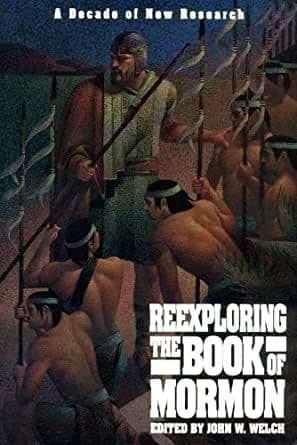Book
85 Chapters

1 Nephi 1:2 “and the language of the Egyptians”
In light of the fact that Lehi and Nephi knew Egyptian and probably had traveled to the land of the Nile, what would you think if archaeologists found ancient Egyptian figurines in Central America? At least it would show that ancient ocean crossings, like Lehi’s, were possible.
About twenty-five years ago, Gareth W. Lowe, Director of the BYU-New World Archaeological Foundation, photographed two figurines located in a display case in the Museo Nacional “David J. Guzman” in San Salvador, El Salvador, and he sent copies to John Sorenson. 1 According to the display caption, the figurines were excavated from three meters in depth from the eastern beaches of Acajutla, Sonsonate, El Salvador, on the Pacific coast near the Guatemala-El Salvador border.
Both figurines clearly belong to a class of ancient Egyptian funerary statuettes known as ushabti. Both are incised with hieroglyphic Egyptian texts: (A) a male holding in his hands portions of the Book of the Dead that refer to the Netherworld and its obstacles, and (B) Osiris, the crowned and bearded god of death and resurrection, with a royal cartouche and then his name in a vertical column. All Egyptians sought in death to identify with Osiris so that they too might be resurrected as he had been. More text may be inscribed on the backs, but detailed photos are necessary for closer study.
Ushabtiu figurines were popular for much of Egyptian history, including the time of Lehi and Nephi (the Saitic Dynasty). Why these two examples should have shown up in El Salvador, though, is a matter for speculation. We cannot be certain where they first surfaced, since they were not examined in place by archaeologists. At least we know that such figurines, made of wood, glazed faience, stone, or metal were deposited in Egypt with the deceased in their tombs in order to perform menial labor on their behalf in the “Eleusian” Netherworld. As with the two figurines, they normally contained the names of the deceased for whom they were made. While premature enthusiasm ought to be avoided, these figurines may be very important indeed.
This report, first issued in January 1984 and based on research by John L. Sorenson and Robert F. Smith, still calls for further information. Anyone who has relevant photographs or who is anxious to pursue this matter is invited to contact F.A.R.M.S., P. O. Box 7113, University Station, Provo, UT 84602.
1. See also Revista del Departamento de Historia [San Salvador, El Salvador] 1, no. 3 (March 1930): 15.
Book
85 Chapters
Items in the BMC Archive are made publicly available for non-commercial, private use. Inclusion within the BMC Archive does not imply endorsement. Items do not represent the official views of The Church of Jesus Christ of Latter-day Saints or of Book of Mormon Central.